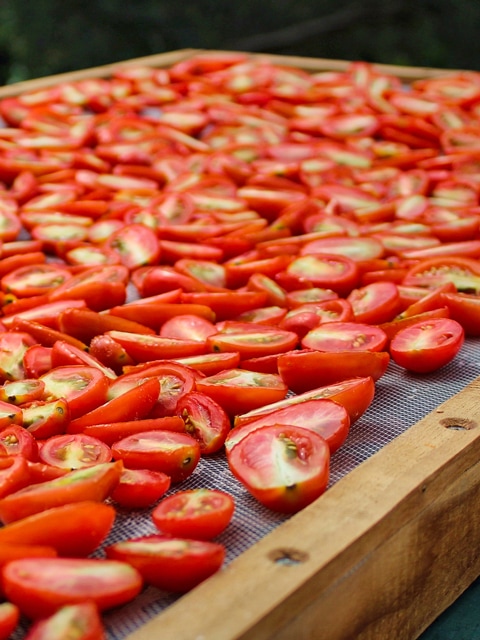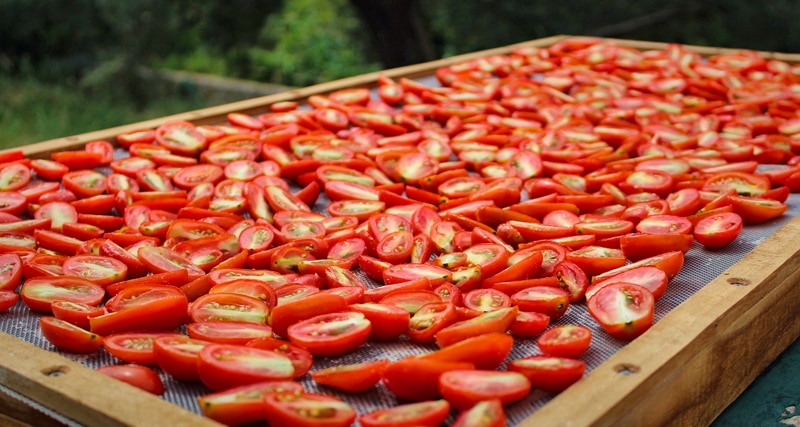


 Add to favorites
Add to favorites
I am going to touch on this form of “dehydrating” briefly. I can’t say that this would be my first choice amongst all the different methods, but the knowledge is great to have just in case. You never know when you might be stranded on an island with one Ace Hardware store and is abundant in sun and fruit. :)
For those of you living in a dry, arid climate, sun-drying fruits may be feasible. It is recommended when sun-drying food that the temperature needs to reach a minimum of 86° F, and the humidity is below sixty percent. If you live in a humid climate, however, sun-drying is likely out of the question, as mold can grow very quickly in warm, moist environments. It takes several days to dry foods outdoors, and because the weather is uncontrollable, this form of dehydrating can be risky.

According to the National Center for Food Preservation, the high sugar and acid content of fruits make them safe to dry outdoors when conditions are favorable for drying. Vegetables are not recommended because they are low in sugar and acid, which will increase the risks of food spoilage.
When drying fruits outside, they must be covered or brought inside at night. The cool night air condenses and could add moisture back to the food, thus slowing down the drying process. The slower the process, the more susceptible they are to bacteria and molds.
Selecting screens:
Staging area:
If you are one that drys fruit outside in such a manner, please leave a comment below to share your experiences with us! Blessings, amie sue
[…] However, to be able to dehydrate blueberries using sunlight you need the temperature to be at least 86°F (30°C). (10) […]